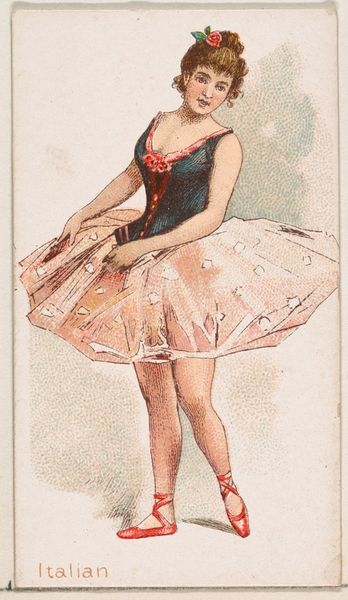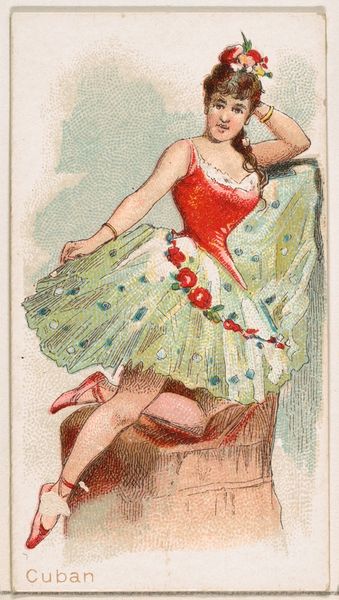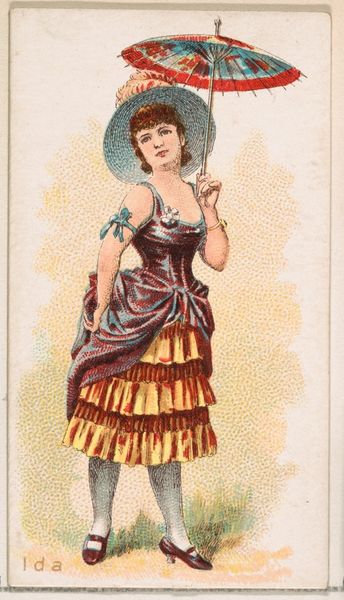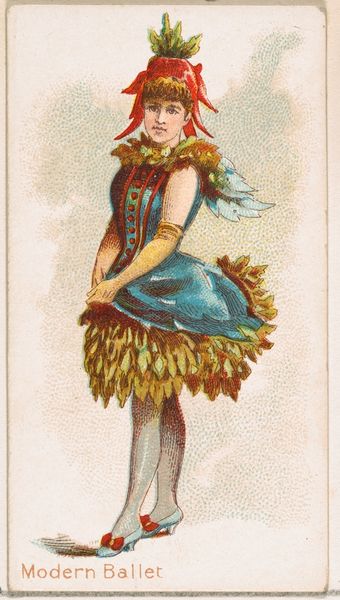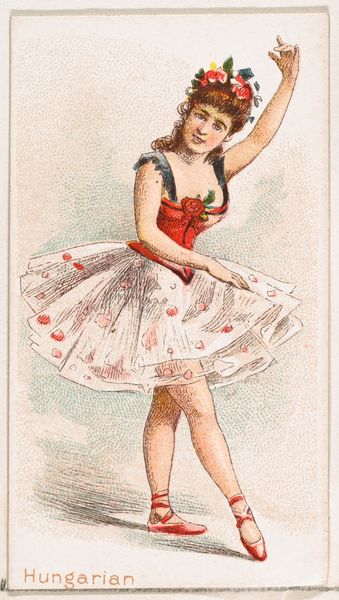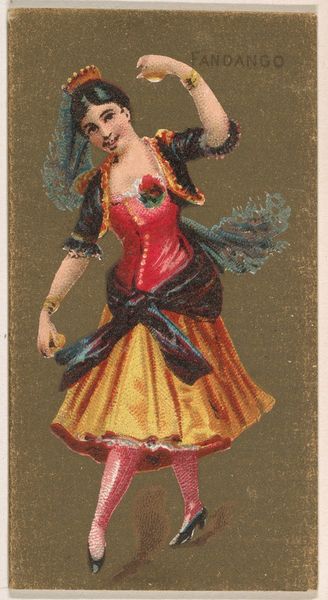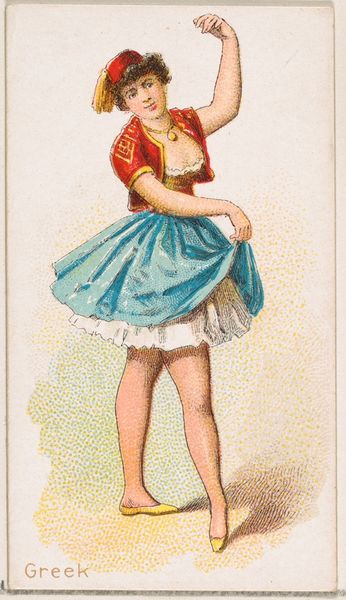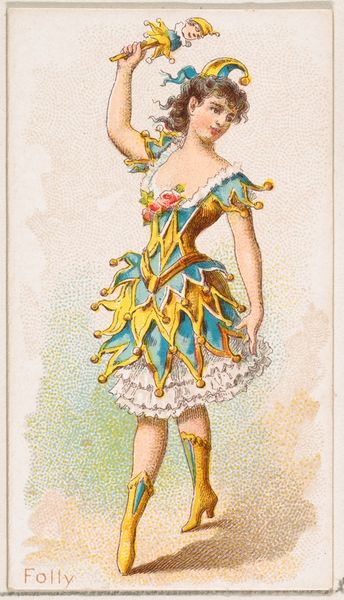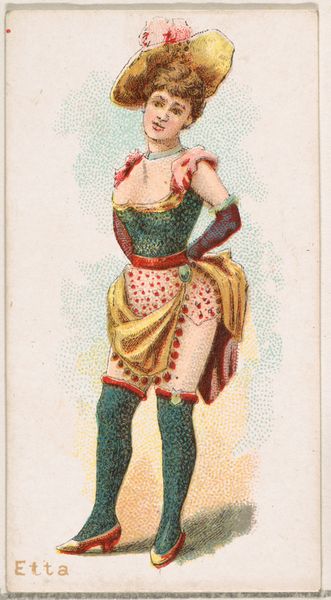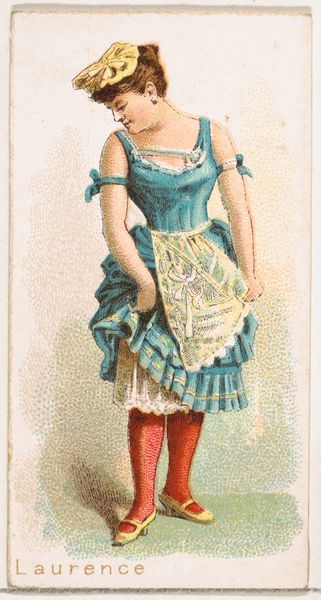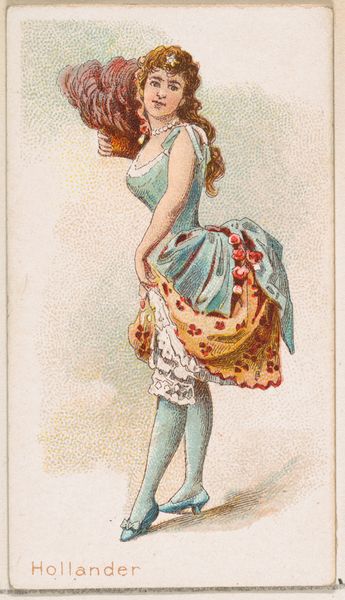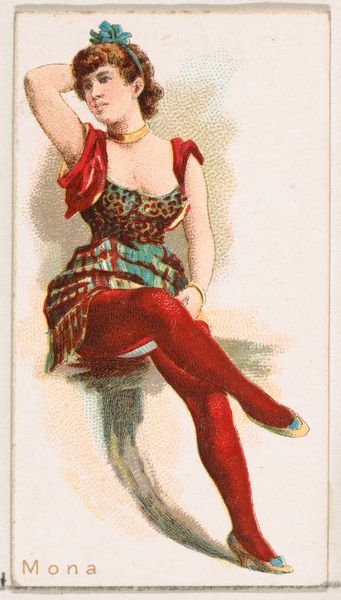
Portuguese Dancer, from the Dancing Women series (N186) issued by Wm. S. Kimball & Co. 1889
0:00
0:00
drawing, coloured-pencil, print
#
portrait
#
drawing
#
coloured-pencil
# print
#
impressionism
#
figuration
#
coloured pencil
#
decorative-art
Dimensions: Sheet: 2 11/16 × 1 7/16 in. (6.9 × 3.7 cm)
Copyright: Public Domain
Curator: Here we have "Portuguese Dancer," a print from the "Dancing Women" series, issued in 1889 by Wm. S. Kimball & Co. This particular print, now residing at the Metropolitan Museum of Art, showcases a performer rendered with colored pencil. Editor: My first impression is of…a tightly wound spring! All that dark skirt, a rose garland clinging like hope, the poised finger. There's a sense of contained energy, like she's about to leap, or perhaps disappear entirely. Curator: That sense of potential movement speaks volumes about the context of this work. Consider the late 19th century: we’re in the midst of burgeoning industrialization, anxieties around gender roles, and an exoticization of "the other". Dancing women, especially those associated with specific nationalities, were simultaneously fetishized and viewed with suspicion. The “Portuguese Dancer” could embody both a romantic ideal and a threat to societal norms. Editor: Suspicion, yes! There’s almost a wariness in her eyes, a questioning. And that outfit…it’s beautiful but theatrical, like a costume designed to both reveal and conceal. Is she empowered, or a pawn in someone else’s game? The colored pencil gives it all a delicacy, a kind of wistful fleeting beauty. It reminds me of a Degas painting, somehow… Curator: I see that, especially concerning questions of representation and the female gaze. And the print medium itself underscores a particular form of dissemination and mass consumption of these images. Consider the ways such images participated in broader power structures and ideological negotiations. This card was made to be collected and exchanged; a means through which to create identity and define boundaries of class, race, and gender in a society undergoing rapid transformation. Editor: It is wild to consider it mass-produced, such an intimate and fragile rendering of a poised woman. I keep coming back to the sense of being caught in a breath: what’s happening before or after this instant? Is she anticipating applause or… fleeing? Curator: Exactly, it is this ambiguity, these multiple readings of a single, fleeting image, that allows us to reflect critically upon history. I'm fascinated by the subtle details that tell complex stories. Editor: For me, it's that underlying tension—the dance between allure and anxiety—that lingers long after you’ve glanced at it. Makes you wonder about her story, doesn’t it?
Comments
No comments
Be the first to comment and join the conversation on the ultimate creative platform.
